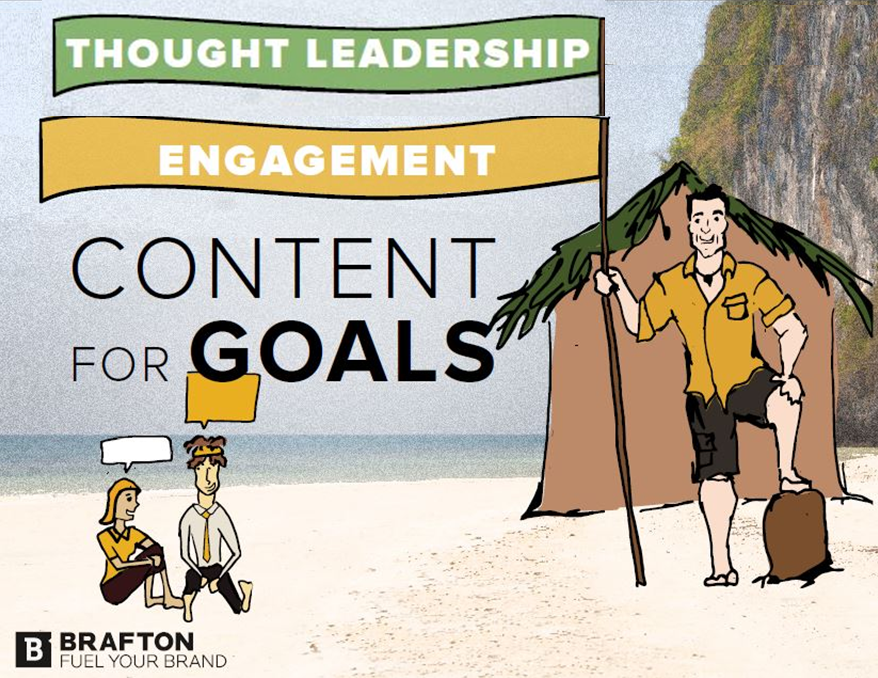Content marketing can get your foot in the door with customers (think brand awareness and SEO), but if you’re not using it to provide meaningful insights, potential web leads won’t invite you into their buying journey. In the same way that you’d have employees in your store to answer questions when people are browsing, website content gives your visitors helpful information to improve their buying experience.
Let’s say someone is embarking on home renovation projects. She might go to the local Ace Hardware store instead of Lowe’s or Home Depot because she’s built personal relationships with the sales associates there. She knows she’ll get expert advice about what to buy – and more importantly – what she doesn’t need to buy.
 The point is: Your store needs to be approachable and your brand needs to be helpful. When your website is the first encounter customers have with your company, the content on your landing pages and blog has to be good enough to fulfill that need for information. It’s acting as the voice of your company and making the first impression on potential customers, which is why it has to be engaging and smart.
The point is: Your store needs to be approachable and your brand needs to be helpful. When your website is the first encounter customers have with your company, the content on your landing pages and blog has to be good enough to fulfill that need for information. It’s acting as the voice of your company and making the first impression on potential customers, which is why it has to be engaging and smart.
In Brafton’s Content for Goals eBook series, we’re taking you through best practices for content to measurably improve your business (not just your Google Analytics charts… though we cover what KPIs to look for, as well). Participate in our March 2015 surveys on content strategies for the top, middle and lower funnels for the chance to receive a complimentary, custom consultation.
As you compete for customers’ attention online, you need content that people want to read with information that sets you apart. To hold their attention and earn their trust, you need the right tools and strategy:
Content for engagement: Hold onto the attention you worked hard to attract
Engagement is important because it means people are paying attention to what you say. If getting people to your website through content is part one, then engaging content is part two. It keeps visitors from bouncing off the page and, ideally, generates enough interest that they want to learn more from you.
Without engaging content, you won’t see the results from all the hard work you pour into getting people to your site.
Engagement is important because:
-
It encourages sharing for more visibility – If consumers like what you’re saying, they’re more likely to pass your content along to other people. This expands your reach to new audiences.
-
It incites interest in your business and your products – An interesting blog post about the evolution of mobile payment technology might encourage readers to find out more about your company’s solution, and how it fits into the marketplace. This curiosity can turn into serious interest – and purchase intent.
-
It can increase your visibility – When visitors stick around to read an entire article, and you click through to additional pages, they’re indicating the information is good and worth reading. Google sees these metrics as a sign of quality content, and search rankings could rise as a result.
To engage your audience, you need to provide them with:
-
An interesting story: At this point it may sound cliched, but you need to tell a good story if you want people to pay attention, but this isn’t exclusive to written content. Infographics tell stories with data and images, while videos depict a narrative visually.
-
Diversity: You might get bored if you visit a blog and find the same kind of information delivered in the same way. Topics and formats need to vary to keep users interested in what you’re saying.
-
An invitation to interact: Engagement means starting a two-way conversation with readers – not just imparting information to your audience. Make sure there’s an opportunity to respond or a call to action that prompts customers to do something next.
To find out how to build a content marketing strategy that keeps your audience engaged and moving through the sales funnel, download Brafton’s free eBook on Content for Engagement
Content for thought leadership: Show prospects why they should pay attention to you
The quest for thought leadership is what inspires a lot of marketers to invest in content. Reminiscent of internet virality, thought leadership is something every business wants (OK – maybe not every business, but most businesses), because it means instant recognition and notoriety in your space by building:
-
Audience trust and a competitive edge: Shoppers turn thought leaders for information or products they can trust. Thought leaders that also provide services probably feel like a ‘safe bet’ because they’re well-known and respected.
-
Industry influence: Even competitors see thought leaders as the gold standard for the industry, and look to them for industry best practices.These are the players to beat, and they generally set the pace for the market.
-
Customer loyalty: If you consistently create resources that educate your audience, and help customers stay on top of their games, they’ll be more likely to stick with you.
But the trick about thought leadership is that it can’t be bottled. And not every company can achieve this goals, or it would lose its value. If every business truly was a thought leader, being one wouldn’t mean much because you wouldn’t have influence. For there to be industry leaders, there must also be some followers.
To become a clear frontrunner in the competition to win customers, you need to offer your customers:
-
Original insights: Show your readers why you’re different from everyone else by highlighting your company’s unique perspective and opinions.
-
In-depth answers: This is the opportunity to go long with your content – whether it’s through a comprehensive video tutorial, or a lengthier written piece that gives the nuanced play-by-play only a true expert could provide. Create things that could be cited (via links).
-
Answers that are easy to understand: Take what you’re expert at, and make it accessible to everyone else. Thought leadership isn’t about technical jaron. It’s about taking what’s complex and dispelling it into straightforward answers that anyone can understand.
-
Cutting-edge information: Share information that’s at the forefront of your industry to show your readers you’re on top of the latest developments – whether through live coverage from trade events, or analysis of proprietary research. More, use your knowledge and show how those trends are shaping the industry as a whole.
To find out how to build a content marketing strategy that helps you stand out and influence your industry, download Brafton’s free eBook on Content for Thought Leadership
You’re moving to the front of the pack, now seal the deal
With these strategies, you’ll gain the the attention of your audience. And once you know they’re invested in what you have to say and sell, it’s time to get them to commit to a conversion. To do that, you’ll need to move even deeper in the sales funnel where interest turns to intent and you get leads to make a purchase decision. Stay tuned!





